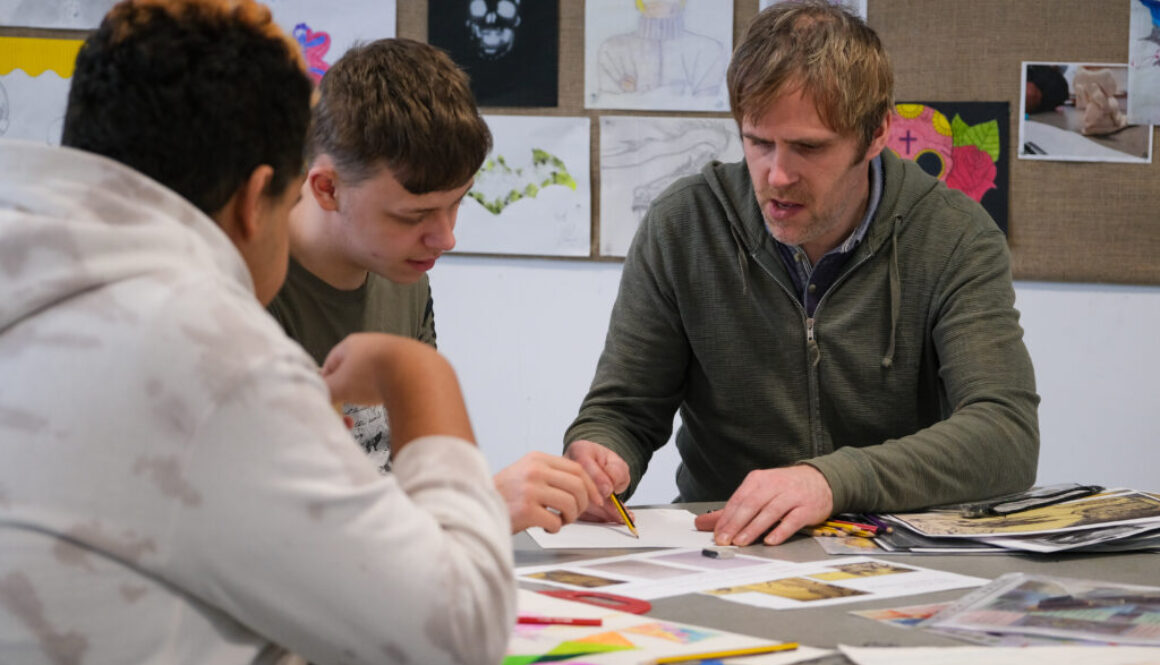Marking and Feedback in Art and Design
By Laura Barraclough
In 2018 The NSEAD launched an enquiry into the effective use of marking and feedback in Art and Design Sketchbooks. This guidance, written by Ged Gast, (a former NSEAD president), provides some good practice examples on adding feedback in sketchbooks. Although these are mainly in Secondary settings, these examples show the expectation for secondary and as such, a similar approach to marking may be adopted in the Primary settings.
The paper considers how to establish an ethic of excellence and provide verbal feedback. Gast also considers the frequency of: marking, grades and marks; ‘Deep Marking’; strategies to reduce marking; and the importance and pitfalls of peer marking.
Assessment
When assessing art, it is important for teachers to design assessments which reflect the subjective nature of art, whilst also giving feedback which is valid and reliable. Self assessment allows children to think critically about their own work and assess their art against the learning objectives/ expected outcomes for that session.
Marking and feedback
Marking and feedback in sketchbooks should address the LO/ success criteria of the activity and praise pupils’ creative work. It is important to note that the comments may not be written on the artwork itself but on a post it note, feedback form, pre – printed stickers or additional sheet. Marking directly into a student’s sketchbook can sometimes interfere with their artwork and so thinking carefully about where to place comments and marking can contribute to an ethic of excellence (Ron Berger, 2003).
Formative assessment in art provides in the moment feedback to pupils. It supports pupils in the immediate task and allows children to check whether they have applied the skills they have learned. It also allows teachers to assess which component knowledge has been acquired (Marc Hayes, 2022). Feedback should focus on quality improvement and ‘next steps’ in a child’s learning journey.
Ethic of Excellence
An ethic of excellence is fundamental for successful art outcomes and assessment in schools. It is the way in which pupils reflect upon their own work and how they value the work they have produced. Children should critically reflect and continuously ask the questions- is this meeting the learning objective? Is this good enough? Would I feel comfortable handing this piece in? Ron Berger, 2003 suggests that this should be the most important assessment goal for schools to establish. Children should feel proud of the work they produce and reflect critically on its qualities.
Using the concept of an Ethic of Excellence, teachers should collaborate with students to help set out the expected standard for art and then discuss what is expected from each session to ensure children have a benchmark to work towards. Visual examples (WAGOLLS) can be used to help guide pupils and also define a success criteria.
Feedback at the back of a sketchbook
Feedback at the end of a unit of work can allow for a more in depth comment to be made by the teacher assessing the work. It can summarise the skills learned over the course of a half term/ term and encompass all of the young person’s learning. It also avoids writing over/ damaging a child’s artwork in their sketchbook by adding comments.
It is important to consider that if this method of feedback is adopted with your class/ setting, this may be a more time consuming task for teachers and educators as it requires them to look over all of the unit before making their assessment judgements and feedback.
Feedback in sessions
Alternatively, some teachers may opt to use post it notes, treasury tag notes and stickers that are placed on/ during each session for children to summarise their thoughts and opinions on their work. This also allows teachers time to reflect upon the success criteria for that lesson and give any constructive feedback to inform future artwork creations.
